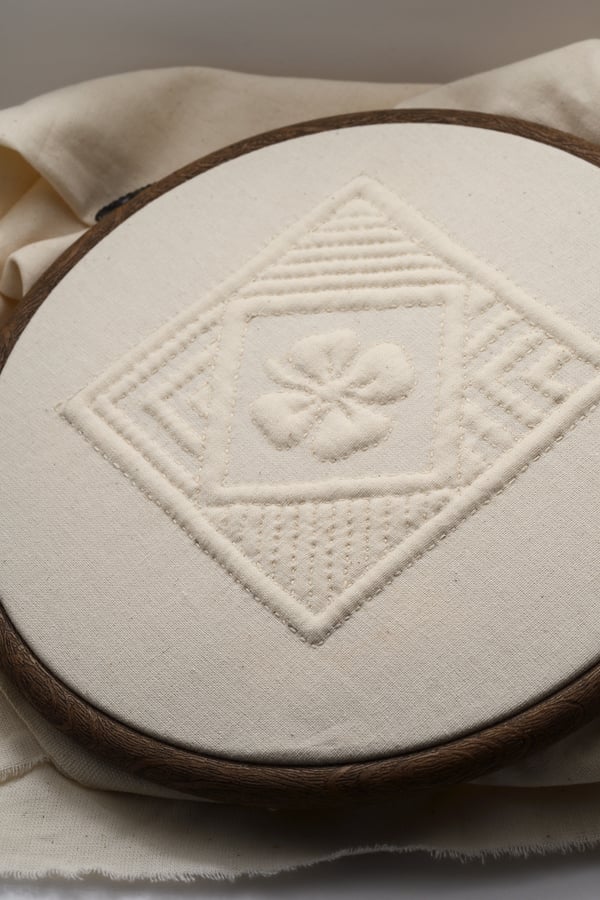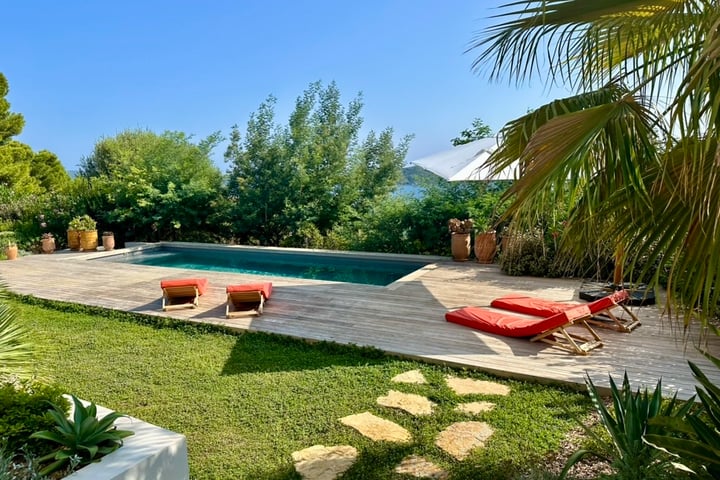A brief history of fashion in Provence
Fashion in the South of France has always been a reflection of its diverse culture and rich history. Traditional costumes varied across regions, distinguished by their colours, embroidery patterns, and materials. These garments reflected the social status of the wearer, from peasants to artisans to the more affluent members of society. In this article, we will be covering some popular fashion trends in Provençal style and exploring the rich history of fashion in Provence.
One example of traditional Provençal dress can be seen in the costume of the women from Menton, a town near the Italian border. These women wore striped skirts, often in red and white, paired with embroidered black shawls and aprons. A distinctive wide-brimmed hat, commonly seen across Provence, was also part of their attire. These hats were practical, designed to be clipped to the waistband when not in use, allowing the women to keep their hands free as they went about their daily tasks. The skirts were typically heavy and quilted, providing warmth in winter, though how they coped with the summer heat remains a mystery.
Another fascinating aspect of Provençal fashion history is the origin of denim. The fabric, now ubiquitous in wardrobes worldwide, can trace its roots back to the town of Nîmes in the sixteenth century. The word "denim" is derived from "de Nîmes," meaning "from Nîmes," while the term "jean" comes from "Gênes," the French name for Genoa, Italy, where the fabric was traded. The durable twill from Nîmes was later used by Levi Strauss to create the first pair of jeans, a garment that has become a global icon.
Provence is also known for its boutis quilting, an intricate embroidery technique that became popular in the eighteenth and nineteenth centuries. This method, characterised by raised motifs, was particularly popular in Provence, where it was used to create everything from clothing to bedspreads. Today, La Maison du Boutis in Calvisson continues to showcase this traditional craft through its museum and workshops. Provence’s influence on fashion extends beyond textiles to the world of haute couture. Christian Lacroix, born in Arles, drew inspiration from the bright colours and rich traditions of his native region. His designs were celebrated for their boldness and innovation, deeply rooted in the history and character of the South of France. Another famous designer, Simon Porte Jacquemus, also hails from Provence. Known for his fresh, playful designs, Jacquemus often incorporates elements of his Provençal heritage into his collections, which he has showcased in various locations across the region, from the lavender fields of Valensole to the salt flats of Salin-de-Giraud.
Provence's long history of textile production is closely linked to its position on the Mediterranean. Marseille, a major port city, was a gateway for fabrics and goods arriving from the East. In the sixteenth century, the city became known for its production of indiennes, vibrant printed cotton fabrics that were highly sought after by the European nobility. Although production was banned for a time to protect other French textile industries, indiennes remained popular, and today, the Souleiado museum in Tarascon offers insights into this fascinating chapter of Provençal fashion history.
What to wear in Provence
When planning what to wear in Provence, it is important to consider both the weather and the region’s laid-back yet chic style. Summers in Provence are warm, with temperatures typically ranging from 25-33°C. Light, breathable fabrics like linen and cotton are ideal for staying comfortable in the heat.
A classic summer wardrobe for Provence includes:
Linen dresses: Opt for breezy linen dresses in neutral tones that can be easily dressed up or down. A linen maxi dress is perfect for both day and night, offering a stylish yet practical option for the warm weather.
Cotton shirts: Lightweight cotton shirts are a staple in Provence. They can be paired with denim shorts or linen trousers for a relaxed yet put-together look.
Woven bags: A woven tote or crossbody bag is both stylish and functional, ideal for carrying essentials as you explore the markets and villages of Provence. If you don't have a bag like this, do not worry, there are plenty of markets where you can pick them up on your trip.
Straw hat: A wide-brimmed straw hat is a must for protecting yourself from the strong Mediterranean sun. It also adds a touch of classic Provençal style to your outfit.
For those visiting Provence in the winter months, it is essential to pack layers. Provence can get quite cold, especially in the evenings. A thick jacket, preferably a down puffer, along with heavy scarves, sweaters, and boots, will keep you warm. Layering is key, as temperatures can vary throughout the day.
Discover the timeless style of Souleiado
When planning your wardrobe for Provence, why not draw inspiration from the region's rich textile heritage? Souleiado, a renowned clothing boutique with deep roots in Provençal fashion history, offers a chic collection of contemporary clothes infused with traditional Provençal designs. With several stores across Provence and the Côte d'Azur, Souleiado is more than just a boutique - it is a tribute to the region’s vibrant cultural tapestry. For an immersive experience, visit their museum in Tarascon to explore the history behind their iconic patterns and fabrics. Whether you are seeking a statement piece or a versatile summer dress, Souleiado perfectly blends tradition with modern fashion.
Learn more about their collections and locations on their official website.

Whether you are exploring the cobbled streets of a historic town, strolling through lavender fields, or enjoying a café in the local square, what you wear in Provence should reflect both the practicality required by the weather and the region’s effortlessly chic style. By embracing the light, airy fabrics and simple elegance that characterise Provençal fashion, you will not only stay comfortable but also feel connected to the rich history and culture of this beautiful region.
A bientôt,
The Provence Holidays Team




































